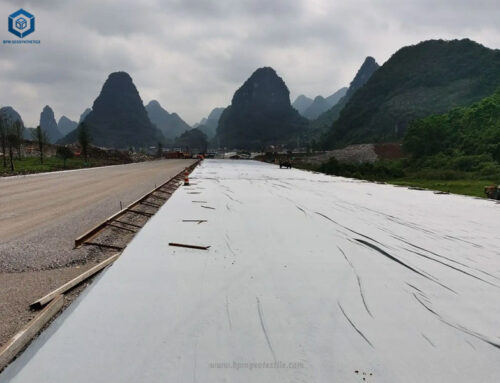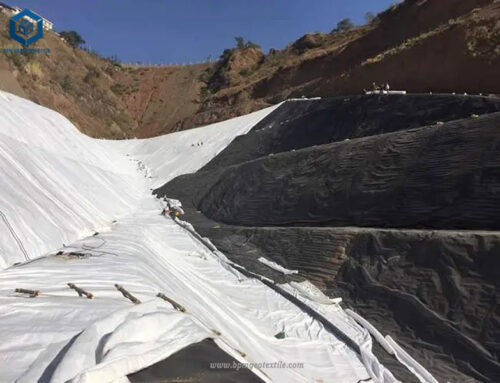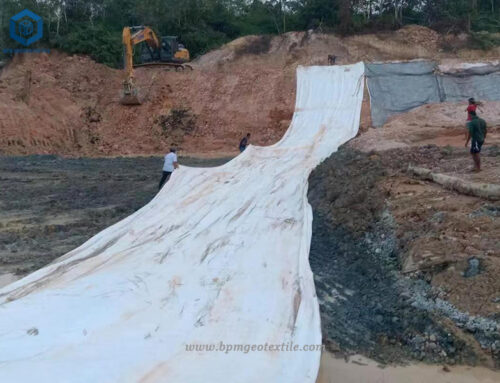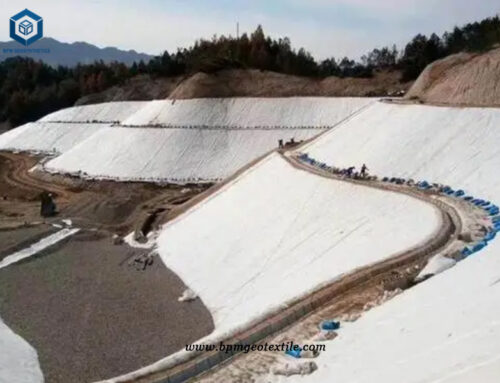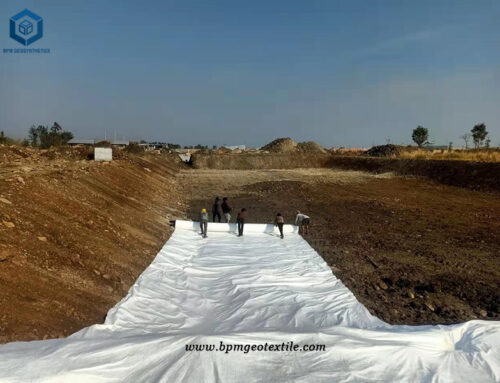Staple fiber nonwoven geotextile fabric is produced by entangling and interlocking 100% virgin polypropylene fibers through a needle-punching process and heat-bonding techniques. This type of nonwoven geotextile fabric possesses cloth-like characteristics and exhibits excellent mechanical properties, effective water permeability, corrosion resistance, anti-aging properties, as well as functions like isolation, filtration, drainage, protection, stability, and reinforcement.
1. What Is Staple Fiber Nonwoven Geotextile Fabric?
Staple nonwoven geotextile fabric is a geotextile material made from intertwined polypropylene fibers through needle-punching and heat-bonding processes. It offers a cloth-like texture and possesses several advantageous properties for geotechnical applications. These include mechanical strength, efficient water permeability, corrosion resistance, anti-aging properties, and functions such as isolation, filtration, drainage, protection, stability, and reinforcement.
The fabric acts as a barrier, preventing the mixing of soil layers or materials, and provides filtration by retaining fine particles while allowing water to pass through. It aids in drainage by facilitating the flow of water and helps protect against potential damage. Additionally, it enhances stability and reinforces soil structures, improving their overall strength and performance.
Staple nonwoven geotextile fabric finds wide application in civil engineering, construction, and environmental projects, such as road construction, erosion control, landfills, retaining walls, and drainage systems. Its versatility and beneficial properties make it an essential component in various geotechnical applications.
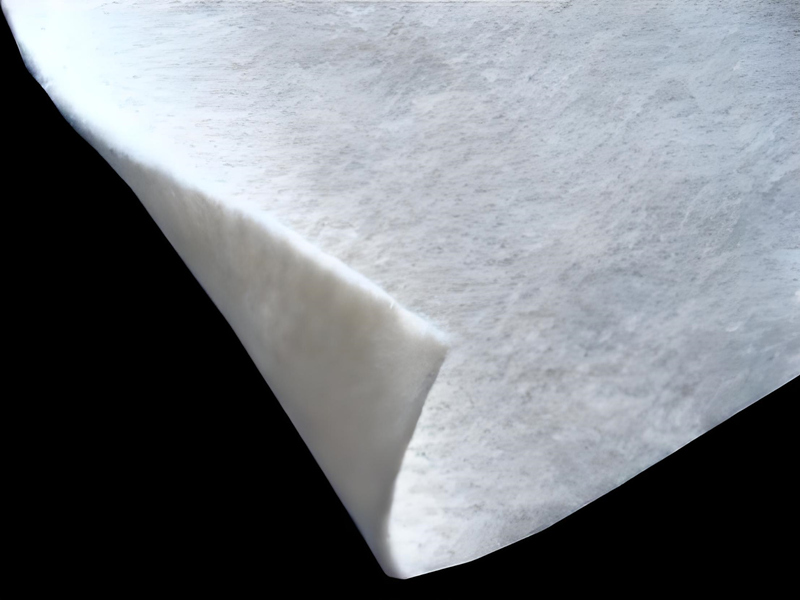
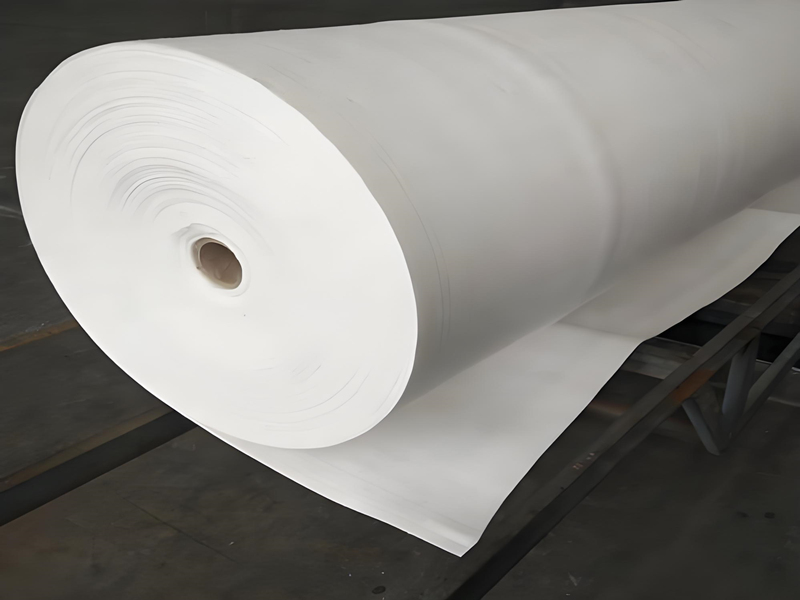
2. What Is Staple Fiber Nonwoven Geotextile Fabric Used for?
Staple nonwoven geotextile fabric is utilized across a broad spectrum of geotechnical applications due to its advantageous properties and functions. Here are some key uses of staple fiber nonwoven geotextile fabric:
2.1 Staple Fiber nonwoven geotextile fabric – Separation and Reinforcement
This fabric is commonly employed to separate different soil layers and reinforce construction projects. It prevents the mixing of soils with varying properties and enhances the load-bearing capacity and stability of soil structures.
2.2 Staple Fiber nonwoven geotextile fabric – Filtration and Drainage
Staple nonwoven geotextile fabric acts as a filtration layer, allowing water to pass through while retaining fine particles. It is used in drainage systems, erosion control measures, and retaining walls to facilitate water flow and prevent soil erosion.
2.3 Staple Fiber nonwoven geotextile fabric – Erosion Control
Geotextile fabric helps stabilize slopes, embankments, and shorelines, serving as an erosion control measure. It provides a protective layer that withstands the erosive forces of water and wind, preventing soil erosion.
2.4 Staple Fiber nonwoven geotextile fabric – Road Construction
Geotextile fabric is widely applied in road construction projects to improve road performance and longevity. It separates and stabilizes different layers, reinforces weak subgrades, and prevents the intrusion of fine soils into road bases.
2.5 Landfill and Environmental Applications
Geotextile fabric is used in landfill liners and caps to create a barrier against the migration of contaminants. It also enhances the structural integrity and stability of landfill systems. In addition, it finds applications in sediment control, wetland restoration, and shoreline protection.
2.6 Construction and Civil Engineering
Geotextile fabric is integral to various civil engineering projects, including retaining walls, foundations, tunnels, and underground structures. It provides reinforcement, filtration, and separation functions to enhance the performance and durability of these structures.
3. What Are Features of Staple Fiber Nonwoven Geotextile Fabric?
Staple fiber nonwoven geotextile fabric possesses distinct features that make it well-suited for geotechnical applications. Here are the key characteristics:
3.1 Robust Mechanical Strength
This fabric exhibits excellent mechanical properties, imparting strength and stability to geotechnical structures. It can withstand various stresses and loads, ensuring the longevity and reliability of the project.
3.2 Effective Water Permeability
Staple fiber nonwoven geotextile fabric demonstrates superior water permeability. It allows water to pass through while maintaining its structural integrity. This feature facilitates efficient drainage, preventing the accumulation of hydrostatic pressure and potential damage.
3.3 Impervious to Corrosion
The fabric is highly resistant to corrosion, rendering it suitable for environments with high moisture content or exposure to chemicals. It retains its performance and integrity even in harsh conditions, ensuring long-term durability.
3.4 Anti-aging Properties
Staple fiber nonwoven geotextile fabric possesses anti-aging characteristics, enabling it to endure prolonged exposure to UV radiation and other environmental factors. This feature safeguards its performance and extends its service life.
3.5 Versatility and Multifunctionality
The fabric serves a wide range of functions, including isolation, filtration, drainage, protection, stability, and reinforcement. It acts as a barrier, separates different soil layers, offers filtration and drainage capabilities, provides protection against potential damage, enhances stability, and reinforces soil structures. This versatility enables its application in diverse geotechnical scenarios.
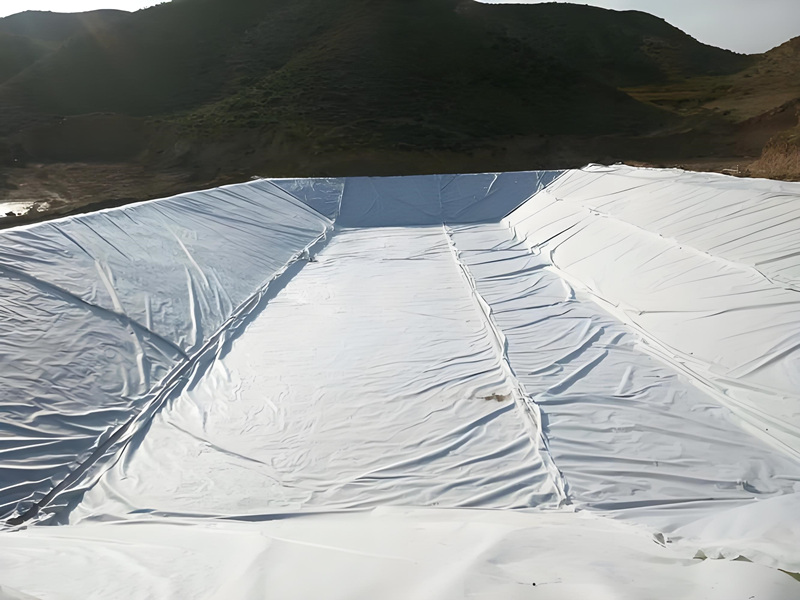
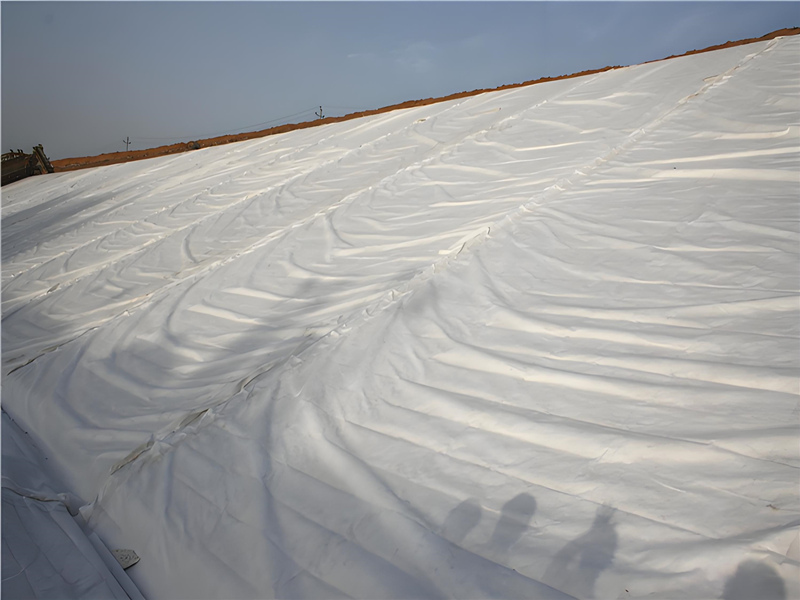
4. Case Study of Staple Fiber Nonwoven Geotextile Fabric
The road construction project aimed to create a durable road in a challenging environment with weak subgrades and high groundwater levels. To enhance the road’s longevity, staple nonwoven geotextile fabric was employed. The fabric played a crucial role in subgrade stabilization, reinforcement of weak areas, drainage improvement, and frost heave prevention. As a result, the road exhibited improved stability, durability, and resistance to adverse soil conditions. The geotextile fabric effectively stabilized the subgrade, distributed loads evenly, and maintained the road’s integrity under heavy traffic. It also facilitated efficient drainage, minimizing water-related damage such as erosion and subgrade weakening. Additionally, the fabric acted as a protective layer against frost heave, mitigating potential road damage during freezing temperatures. The utilization of this fabric led to cost and time savings due to its easy installation and versatility in addressing various geotechnical challenges.
- Total quantity – 19,014 squares meters
- Weight – 160g/m2
- Each roll size is 5.9m*100m
5. Summary
The case study showcases the effective utilization of staple fiber nonwoven fabric in road construction, resulting in notable improvements in the road’s stability, durability, drainage, and resistance to frost heave. The successful application of this fabric demonstrates its value as a solution for tackling difficult soil conditions and enhancing the overall performance of geotechnical projects.
The case study showcases the effective utilization of staple fiber nonwoven geotextile in road construction, resulting in notable improvements in the road’s stability, durability, drainage, and resistance to frost heave. The successful application of this fabric demonstrates its value as a solution for tackling difficult soil conditions and enhancing the overall performance of geotechnical projects.
BPM Geotextile is not only manufacturing best quality geosynthetic products but also providing professional design and installation service. OEM, ODM, custom development and fabrication are also available.If you have any questions or inquiries, please contact me.

